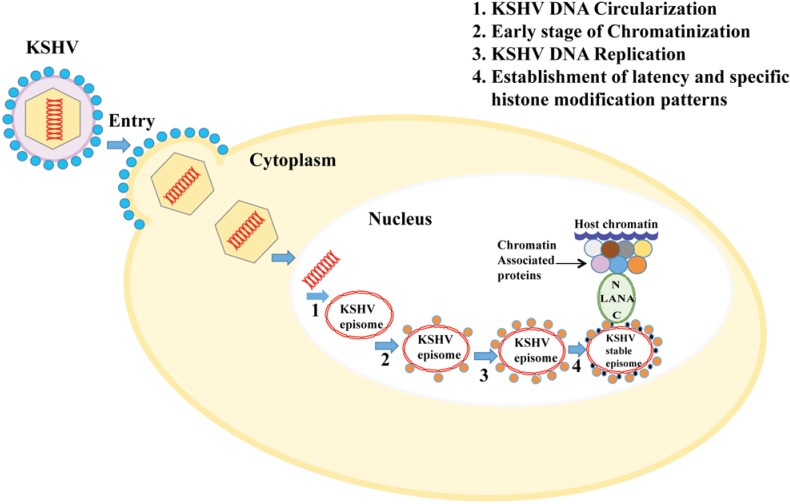Figure 1.
The chromatinization and maintenance of the KSHV genome following de novo infection: After the KSHV virion attaches to the host cell, the viral capsid enters the cytoplasm, followed by the ejection of viral DNA into the nucleus. Subsequently, the linear viral genome is circularized into an extrachromosomal episome to avoid detection by the host DNA damage response; (2) Circularized genome is further chromatinized using cellular histones and histone modifying factors resulting in a stable episome; (3) Viral genome, which is being maintained as multicopy chromatinized episome then replicates along with the cellular genome; (4) For the stable persistence and segregation of KSHV epigenome during latency, KSHV latent protein LANA binds to the TR region of the viral genome and tethers the viral genome to the host chromosome through its amino-terminus via interaction with histones and cellular chromatin associated proteins.

